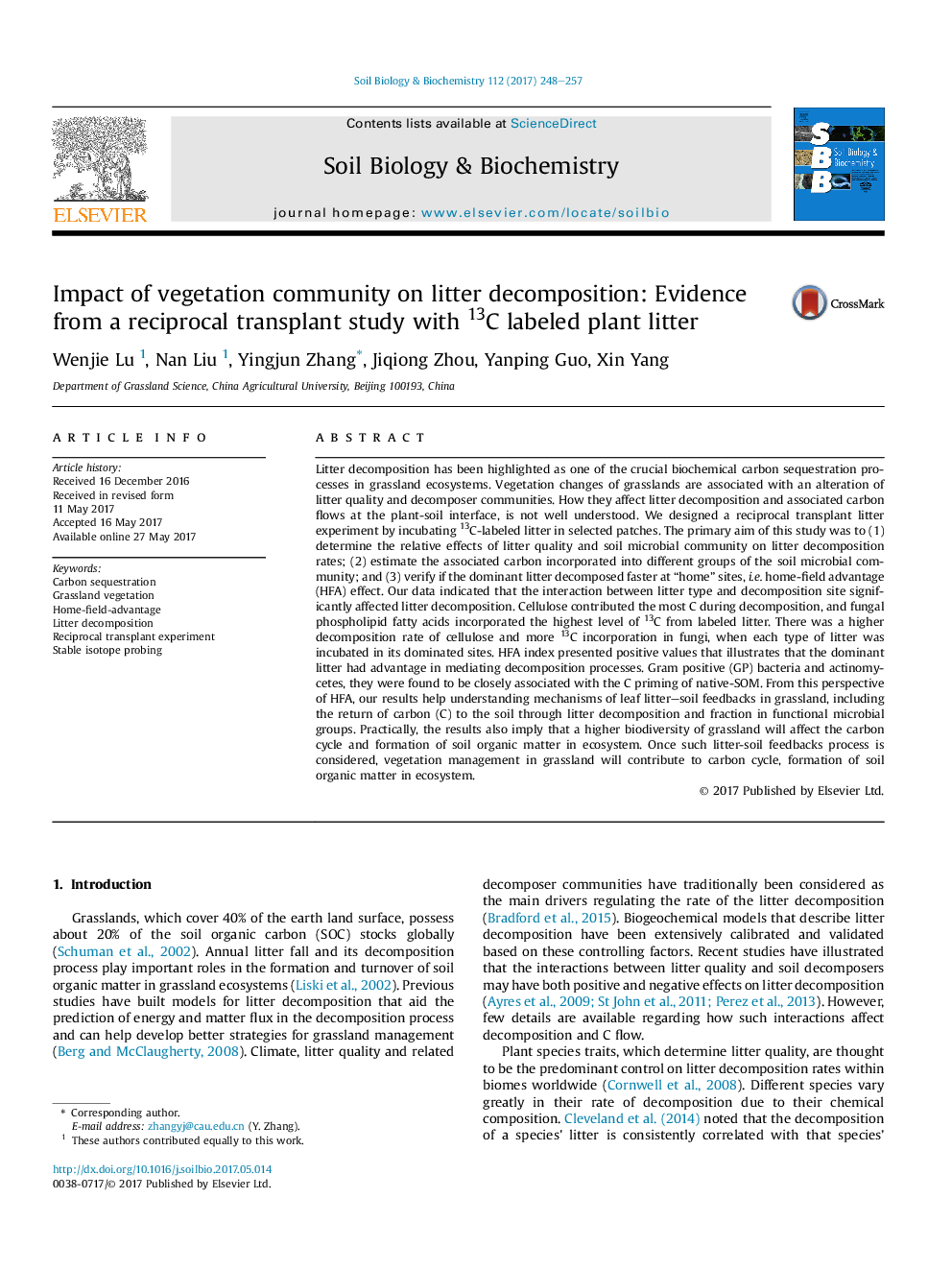| Article ID | Journal | Published Year | Pages | File Type |
|---|---|---|---|---|
| 5516354 | Soil Biology and Biochemistry | 2017 | 10 Pages |
â¢Litter decomposition is mediated by litter type and sites, as well as their interactions.â¢Decomposition of cellulose and fungi contributed the most C turnover during decomposition.â¢Home-field advantage functions in mediating litter mass loss and C turnover process in the soil.
Litter decomposition has been highlighted as one of the crucial biochemical carbon sequestration processes in grassland ecosystems. Vegetation changes of grasslands are associated with an alteration of litter quality and decomposer communities. How they affect litter decomposition and associated carbon flows at the plant-soil interface, is not well understood. We designed a reciprocal transplant litter experiment by incubating 13C-labeled litter in selected patches. The primary aim of this study was to (1) determine the relative effects of litter quality and soil microbial community on litter decomposition rates; (2) estimate the associated carbon incorporated into different groups of the soil microbial community; and (3) verify if the dominant litter decomposed faster at “home” sites, i.e. home-field advantage (HFA) effect. Our data indicated that the interaction between litter type and decomposition site significantly affected litter decomposition. Cellulose contributed the most C during decomposition, and fungal phospholipid fatty acids incorporated the highest level of 13C from labeled litter. There was a higher decomposition rate of cellulose and more 13C incorporation in fungi, when each type of litter was incubated in its dominated sites. HFA index presented positive values that illustrates that the dominant litter had advantage in mediating decomposition processes. Gram positive (GP) bacteria and actinomycetes, they were found to be closely associated with the C priming of native-SOM. From this perspective of HFA, our results help understanding mechanisms of leaf litter-soil feedbacks in grassland, including the return of carbon (C) to the soil through litter decomposition and fraction in functional microbial groups. Practically, the results also imply that a higher biodiversity of grassland will affect the carbon cycle and formation of soil organic matter in ecosystem. Once such litter-soil feedbacks process is considered, vegetation management in grassland will contribute to carbon cycle, formation of soil organic matter in ecosystem.
